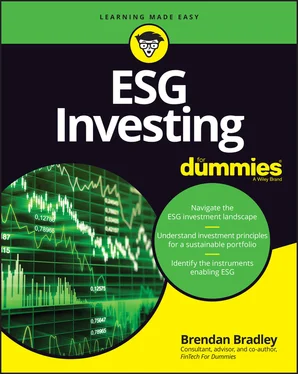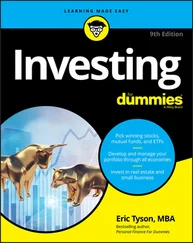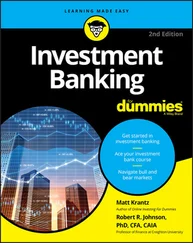Investments in biodiversity contribute directly to the full range of UN Sustainable Development Goals (SDGs). Conserving biodiversity and ecosystems preserves the ability of our planet to sustain our prosperity. Biodiversity finance combines conventional capital with financial incentives to fund sustainable biodiversity management. It can include private and public financial resources, and investments in commercial businesses that create positive biodiversity outcomes. However, most funding originates from public funds, including domestic public budgets, biodiversity-positive agricultural subsidies, and international transfers of public funds, and these activities haven’t been well communicated on a national scale. Moreover, without specific information on recipient-country expenditures and priorities, development partners have been unwilling to promise support to reach biodiversity management goals and objectives. Investors tend to lump the associated risks in with industries such as mining.
 Therefore, investors are demanding more information on biodiversity to ensure any risks are well managed. Meanwhile, increasing awareness that assets can become stranded through biodiversity loss is escalating the response. For example, biodiversity issues on agricultural land diminish its capacity to grow crops and can lead to the land becoming stranded. Financial organizations need to support the growth of methodologies to gauge biodiversity loss, conservation, and enhancement. More data is required to quantify biodiversity risks to enable integration into valuation tools. Investors should allocate assets toward companies that work in environmentally sustainable ways and create biodiversity-positive technologies while embedding biodiversity protection. And companies need to further disclose the impact of their economic activities on biodiversity.
Therefore, investors are demanding more information on biodiversity to ensure any risks are well managed. Meanwhile, increasing awareness that assets can become stranded through biodiversity loss is escalating the response. For example, biodiversity issues on agricultural land diminish its capacity to grow crops and can lead to the land becoming stranded. Financial organizations need to support the growth of methodologies to gauge biodiversity loss, conservation, and enhancement. More data is required to quantify biodiversity risks to enable integration into valuation tools. Investors should allocate assets toward companies that work in environmentally sustainable ways and create biodiversity-positive technologies while embedding biodiversity protection. And companies need to further disclose the impact of their economic activities on biodiversity.
Some tools are currently being developed that compare how companies respond to material biodiversity risk, which should help investors understand how companies are mitigating “known unknown” risks, as well as compare how they balance economic returns with sustainable benefits. Many hope that such indicators will realize for biodiversity loss what the tools highlighting CO 2emission levels achieved for climate change (I cover CO 2earlier in this chapter). These indicators will need to identify any correlation between biodiversity and the success of the economy and allow investors to place an economic value on biodiversity.
 The COVID-19 pandemic should accelerate the focus on sustainable investing in general and biodiversity more specifically. Still, the pandemic shows that when biodiversity is destroyed, the system that supports human life is also affected, as the loss of biodiversity provides an opportunity for pathogens to pass between animals and people more freely. However, the risk is that policymakers and companies spend too much time focused on the fallout from the pandemic, including increasing debts, balance sheet damage, and weaker profits, such that other biodiversity issues remain in the background.
The COVID-19 pandemic should accelerate the focus on sustainable investing in general and biodiversity more specifically. Still, the pandemic shows that when biodiversity is destroyed, the system that supports human life is also affected, as the loss of biodiversity provides an opportunity for pathogens to pass between animals and people more freely. However, the risk is that policymakers and companies spend too much time focused on the fallout from the pandemic, including increasing debts, balance sheet damage, and weaker profits, such that other biodiversity issues remain in the background.
See the forest for the trees: Deforestation
The EPA defines deforestation as the “permanent removal of standing forests.” However, such removal can occur for different reasons and has a variety of destructive consequences. Reports suggest that 80 percent of deforestation results from extensive cattle ranching and logging for materials and development. It has been happening for thousands of years, primarily since humans evolved from hunter-gatherer to agricultural-based societies and needed larger swathes of land to facilitate farming and housing. Modern requirements have converted this into an epidemic, leading to the loss of animal and plant species, due to their loss of habitat, as well as the following issues:
Healthy forests act as carbon sinks by absorbing carbon dioxide. Therefore, cutting down forests releases carbon into the atmosphere and reduces their ability to act as carbon sinks in future.
Trees also help manage the level of water in the atmosphere by regulating the water cycle. In deforested areas, there is less water in the air that is returned to the soil, resulting in dryer soil and an inability to grow crops. Furthermore, trees help the land retain water and topsoil, providing rich nutrients to sustain additional forest life, without which the soil erodes and washes away, causing farmers to move on and perpetuate the cycle.
The barren land left behind due to these unsustainable agricultural routines is more susceptible to flooding, especially in coastal regions. This also has an effect on seagrass meadows, a group of marine flowering plants, which are one of the world’s most productive ecosystems. They constitute an important CO2 sink, which is responsible for about 15 percent of the total carbon storage in the ocean.
As large amounts of forest are cleared away, indigenous communities, which rely on the forests to maintain their way of life, are also under threat. The governments of countries with native rainforests generally attempt to evict the indigenous tribes before the clearing occurs.
 Four main commodity supply chains — beef, soy, palm oil, and pulp and paper — are predominantly sourced from regions with high deforestation risk. The production of these commodities is worth hundreds of billions of dollars annually across the tropical forest regions of Latin America, Southeast Asia, and Sub-Saharan Africa. Within these four commodities, analysts suggest that 50 to 80 percent of current production is linked to past deforestation. The extent of production related to deforestation can differ by location, but avoiding further deforestation, while supporting restoration and rehabilitation, will require changes from all producers. Furthermore, a report on climate change and land released by the Intergovernmental Panel on Climate Change showed that 11 percent of greenhouse gas emissions are caused by poor forestry and land-use management, including commodity-driven deforestation.
Four main commodity supply chains — beef, soy, palm oil, and pulp and paper — are predominantly sourced from regions with high deforestation risk. The production of these commodities is worth hundreds of billions of dollars annually across the tropical forest regions of Latin America, Southeast Asia, and Sub-Saharan Africa. Within these four commodities, analysts suggest that 50 to 80 percent of current production is linked to past deforestation. The extent of production related to deforestation can differ by location, but avoiding further deforestation, while supporting restoration and rehabilitation, will require changes from all producers. Furthermore, a report on climate change and land released by the Intergovernmental Panel on Climate Change showed that 11 percent of greenhouse gas emissions are caused by poor forestry and land-use management, including commodity-driven deforestation.
In 2019, institutional investors representing US$16.2 trillion in assets under management and coordinated by two organizations — Principles for Responsible Investment (PRI) and Ceres — demanded that companies take urgent action due to the destructive fires in the Amazon, which were partly due to the accelerating rate of deforestation in Brazil and Bolivia. They argued that deforestation and loss of biodiversity not only are environmental problems but also have major negative economic consequences that need more effective management of agricultural supply chains. In addition, large corporations have been wary of the reputational risk if their supply chains are linked to these issues and have pledged to exclude deforestation from their supply chains. Meanwhile, pension funds are considering divesting holdings in transnational commodity traders operating in such countries. As a result, it’s likely that they will need to shift to deforestation-free methods in the future.
Don’t throw your future away: Waste management
The traditional model of waste management is changing. Collection methods, waste-to-energy solutions, and innovations are all essential elements directing us to a circular economy model (an economic system aimed at eliminating waste and the continual use of resources). Focus on waste is impacting all companies that produce products, and they all need to consider how they take greater ownership of the waste they produce throughout their production cycle. As populations have grown and urbanization has increased, the work of waste management companies has become increasingly vital. The market size of global waste management is anticipated to grow at a compound annual rate of 5.5 percent from 2020 to 2027, becoming a US$2.34 billion marketplace (go to www.alliedmarketresearch.com/waste-management-market for more information). The market can be broken down into municipal, industrial, and hazardous wastes, where collection and disposal services are provided. The collection services include areas such as storage, handling, and sorting, while disposal services focus on landfills and recycling.
Читать дальше

 Therefore, investors are demanding more information on biodiversity to ensure any risks are well managed. Meanwhile, increasing awareness that assets can become stranded through biodiversity loss is escalating the response. For example, biodiversity issues on agricultural land diminish its capacity to grow crops and can lead to the land becoming stranded. Financial organizations need to support the growth of methodologies to gauge biodiversity loss, conservation, and enhancement. More data is required to quantify biodiversity risks to enable integration into valuation tools. Investors should allocate assets toward companies that work in environmentally sustainable ways and create biodiversity-positive technologies while embedding biodiversity protection. And companies need to further disclose the impact of their economic activities on biodiversity.
Therefore, investors are demanding more information on biodiversity to ensure any risks are well managed. Meanwhile, increasing awareness that assets can become stranded through biodiversity loss is escalating the response. For example, biodiversity issues on agricultural land diminish its capacity to grow crops and can lead to the land becoming stranded. Financial organizations need to support the growth of methodologies to gauge biodiversity loss, conservation, and enhancement. More data is required to quantify biodiversity risks to enable integration into valuation tools. Investors should allocate assets toward companies that work in environmentally sustainable ways and create biodiversity-positive technologies while embedding biodiversity protection. And companies need to further disclose the impact of their economic activities on biodiversity. The COVID-19 pandemic should accelerate the focus on sustainable investing in general and biodiversity more specifically. Still, the pandemic shows that when biodiversity is destroyed, the system that supports human life is also affected, as the loss of biodiversity provides an opportunity for pathogens to pass between animals and people more freely. However, the risk is that policymakers and companies spend too much time focused on the fallout from the pandemic, including increasing debts, balance sheet damage, and weaker profits, such that other biodiversity issues remain in the background.
The COVID-19 pandemic should accelerate the focus on sustainable investing in general and biodiversity more specifically. Still, the pandemic shows that when biodiversity is destroyed, the system that supports human life is also affected, as the loss of biodiversity provides an opportunity for pathogens to pass between animals and people more freely. However, the risk is that policymakers and companies spend too much time focused on the fallout from the pandemic, including increasing debts, balance sheet damage, and weaker profits, such that other biodiversity issues remain in the background.










